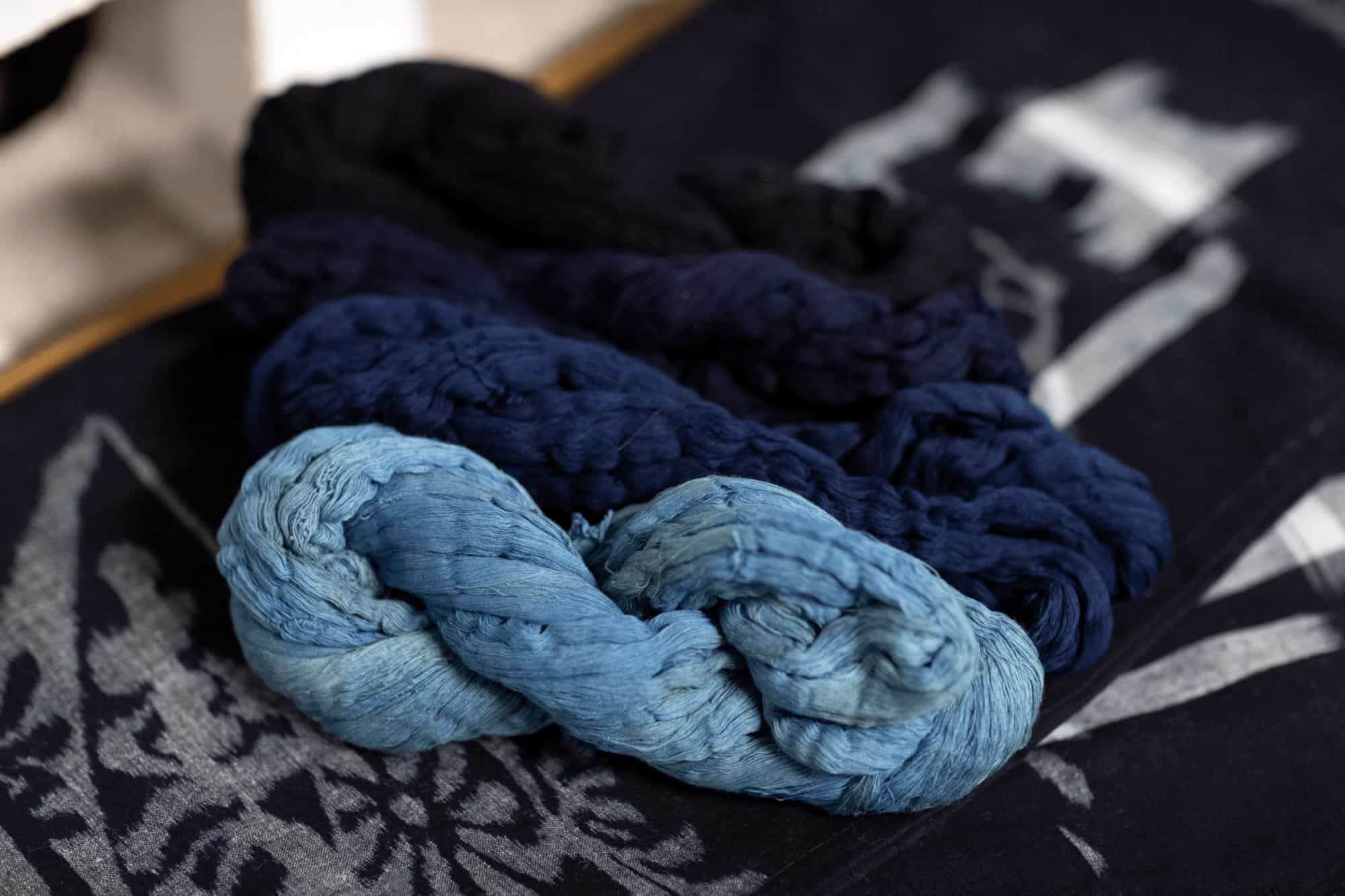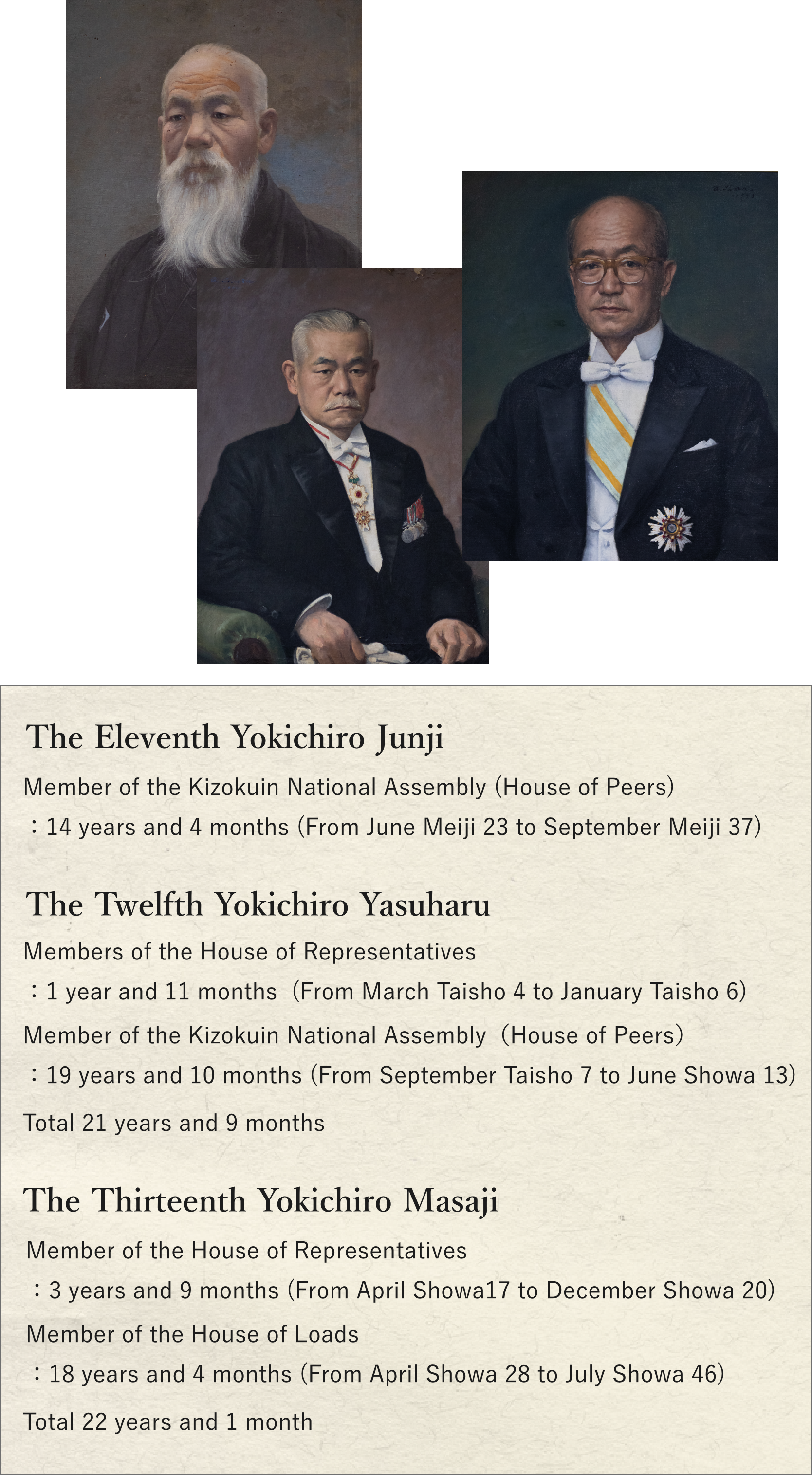Blue comes from indigo
bluer than indigo


How Miki Sangyo started
In the early Edo period, Awa indigo spreads throughout Japan
It is said that during the Sengoku – Warring States period, Nagaharu Bessho, the lord of Banshu Miki Castle (Miki City, Hyogo Prefecture), was defeated by Hideyoshi in a battle, and his cousin Noriharu Bessho, who was 10 years old at the time, escaped to Awa Province with his retainers. increase. At this point, Noriharu changed his surname to Miki and changed his name to Yokichiro. Then, in 1674, when the Edo period began, Takaharu, the second generation of the company, started dealing with indigo. This is how Miki Sangyo was founded.
Before long, Awa indigo was promoted as a special product of the clan, and its name became known throughout the country. The indigo of Tokushima is treated as a special case because of its high quality, and it is said that the indigo of Awa was classified as ‘Hon-ai’ and the indigo of other regions as ‘Ji-ai’. The deep and vivid indigo color is now loved all over the world as Japan Blue.
After that, Awa indigo prospered all over the country. In 1789, he opened a shop in Edo Honzaimoku-cho (the location of the current head office), and under the name of Aiya Yokichiro, the 8th generation expanded sales channels throughout the Kanto region, laying the foundation for today’s Miki Sangyo. is.
Flexibly
Control the strength

With the Meiji Restoration
Conversion to Indian indigo and artificial indigo
In the Meiji period, Awa indigo began to decline as cheaper Indian indigo began to flow in from India. The 11th generation Junji, who was a member of the House of Peers, was sensitive to the trend, in 1897 (Meiji 30), we decided to sell the products together.
After Indian indigo, artificial indigo appeared in 1898 (Meiji 31), and the competition became even more intense. Miki Sangyo was one of the first companies to acquire the sole sales rights in the Kanto region of Germany’s Hoechst AG, and in 1904 (Meiji 37), it was the first company in the industry to begin selling artificial indigo. In the following year, the Osaka branch was established in Minamihorie, Nishi-ku, Osaka, in order to expand sales channels to the Kansai region.
As a result of this war of overselling, there was a growing trend toward joint sales among dealers. Due to the achievements of the Miki family, the 12th Yasuharu has been appointed as the company’s representative. Since then, he has continued to hold the post, presiding over the company for 25 years until the company was dissolved after completing his duties in July 1932, leaving many footprints in the artificial indigo industry.
Tenpan Ranshoku

The words of Kaishu Katsu
“Do not monopolize the business”
At the end of the Bakumatsu – Tokugawa shogunate, the 11th generation Junji, who had a relationship with Katsu Kaishu of the shogunate through a kendo hall near Senso-ji Temple, once asked him to write a calligraphy. What was written at that time is the calligraphy of “Tenpan Ranshoku”.
The meaning was, “Miki-san, don’t be greedy to grab the world’s indigo ball. Well, you should do business with at least half of your goals.” Miki It also served as a guideline for business management in the industry.
The plaque was displayed in the reception room of the Osaka sales office for a long time, but unfortunately it was destroyed by fire during the war. However, this word is inherited without being lost.
The 13th Yokichiro wrote in his book 『Shutsuranroku』 (published by Miki & Co., Ltd. 1955), “I really like this word. This is because I see the lessons of Kaishu Sensei, which I have included in these four characters, as the most precious commandments, not only for business and sales, but for all other matters.” I recall.
Information quality and quantity
and diversity

Expanding into various dyes and industrial chemicals,
and start as a corporation
As an alternative to indigo, we focused on imported dyes produced using new technology. A German curry dye company wanted to partner with us to enter the Japanese market, so we acquired sole sales rights, and in 1910 (Meiji 43), we embarked on full-scale sales activities for imported dyes.
On the other hand, in June 1914 (Taisho 3), the government encouraged the domestic production of dyes in the wake of World War I, and many dye factories appeared. While we began handling domestic dyes produced by these factories, we also entered the new field of industrial chemical sales, focusing on the fact that dye factories consume large amounts of industrial chemicals.
As the business expanded in this way, on April 1, 1918 (Taisho 7), Miki Yokichiro Shoten changed its trade name and was newly established as Miki Shoten Co., Ltd. However, after World War I ended in the same year, the company was hit by a rapid recession.
The one who responds to change survives

The Manchurian Incident, during the war
Management innovation and expansion into overseas markets
The 13th Masaji took steps to rationalize the company, including cutting back on the excessive inventory of goods, and this worked, and his business performance recovered rapidly.
However, in 1931 (Showa 6), the Manchurian Incident followed by the Sino-Japanese Incident, and in December 1941 (Showa 16), the Pacific War broke out. The dye industry was also brought under control, and in January 1941, Japan Synthetic Dyestuffs Co., Ltd., a national policy company, was established, and our company was also included under its umbrella. Since it became impossible to sell freely in Japan, we moved our business to the continent in search of a new land, using the former Manchukuo branch office that we had opened up until then.
At the same time, we continued to make efforts to overcome the difficult situation during the war by establishing new subsidiaries in Japan, and on August 16, 1943, we changed our company name to the current Miki & Co., Ltd. to prepare for a leap into the future. rice field.
Contributing to society
passion for education

Participation and Contribution to National Government
In November 1890, when the parliamentary system was established for the first time in Japan and the opening ceremony of the first Imperial Diet was held, the 11th Yokichiro attended the ceremony as a member of the House of Peers. Since then, three generations of our company’s president have participated in national politics.
In 1940, the 13th Yokichiro Miki founded the Korakukai for the purpose of raising children’s education. was poured.
After the war, the “Koraku Prize” was awarded to students and researchers with excellent grades at Tokushima University.
Jump into the world
Miki Sangyo

Post-war recovery and
Overseas Challenges and Leap Forward
The war ended on August 15, 1945 (Showa 20). The damage caused by this war was the greatest in Miki Sangyo’s long history. After losing most of the farmland of 300 towns that had been handed down from his ancestors, he turned to building rental buildings and built two buildings in Tokyo, one in Osaka, and one in Tokushima in the 30 years after the war.
Along with the 13th Masaji, who stood up for the revival of the company, all the employees were also motivated and worked together to achieve reconstruction. As if to support Masaji’s recollection that “the employees worked really hard at that time,” the company recorded a profit as soon as the following fiscal year (Showa 21), and continued to improve its performance year after year.
Yoshiji Yokichiro, the fourteenth generation, foresaw the age of internationalization. In 1967, when few chemical trading companies had yet entered the United States, a local representative office was established in New York (1973). (incorporated in February 1973) and started trading with the United States. In 1975 (Showa 50), a local representative office (incorporated in 1980) was established in Düsseldorf, Germany. In 1988 (Showa 63), we established a local subsidiary in Bangkok, Thailand, literally making a leap forward to the world.
Sustainable
connect to the future

In global expansion
Taking on global challenges
In April 1995, Miki Sangyo set up its Tokyo head office and established a sales structure centered on Tokyo.
On the other hand, in November 1996, MIKI SANGYO (USA) INC. moved from New York to New Jersey, aiming to expand its business there.
In June 2000, the 14th Yokichiro Miki was appointed Chairman and Executive Vice President Midori Miki was appointed President. As a new business vision, we started efforts to contribute to the conservation of the global environment, and in March 2002, we acquired “ISO14001” certification. We are promoting the planning, development, and sales of environmentally friendly products and services.
In August 2003, we established a local subsidiary, Sanyo (Shanghai) Trading Co., Ltd., in Shanghai, China. In March 2013, established PT. MIKI INDONESIA as a local subsidiary in Jakarta, Indonesia. We are further expanding our globalization with local subsidiaries in the US, Germany and Thailand.

